When designing your tea tasting journal, start by choosing the right format that fits your lifestyle, whether it's a portable notebook or a digital app. Create a detailed template that includes space for tea information, brewing details, and sensory evaluations. Implement a classification system to organize your teas by type, origin, or flavor profile. Don't forget to add sections for brewing notes, allowing you to refine your techniques over time. Finally, incorporate visual elements like flavor wheels and rating systems to enhance your tasting experience. These tips will help you craft a personalized journal that'll elevate your tea appreciation journey.
Choose the Right Journal Format
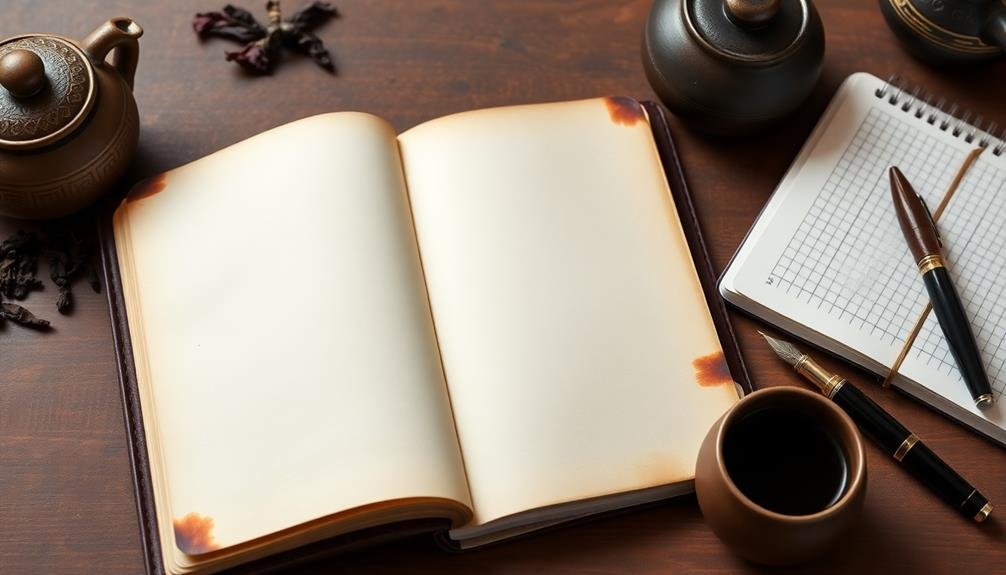
When it comes to tea-tasting journaling, selecting the right format is essential for a satisfying experience. You'll want to evaluate several factors before deciding on the perfect journal for your needs.
First, think about the size and portability of your journal. If you plan to carry it with you to tea shops or tasting events, a compact notebook might be ideal. However, if you prefer to journal at home, a larger format could provide more space for detailed notes and observations.
Next, assess the paper quality. Tea stains can be common, so opt for thick, high-quality paper that won't bleed through. Lined pages can help keep your notes organized, while blank pages offer flexibility for sketches or diagrams.
Digital options are also worth exploring. Apps and online platforms designed for tea tasting can offer features like searchable entries, photo uploads, and easy sharing with fellow enthusiasts.
However, some people find the tactile experience of a physical journal more enjoyable and conducive to mindful tasting.
Ultimately, choose a format that fits your lifestyle and preferences, ensuring you'll be motivated to use it consistently.
Create a Detailed Tasting Template
A well-designed tasting template forms the backbone of your tea journal, ensuring you capture all essential aspects of each tasting experience. Start by including basic information like the tea's name, type, origin, and vendor.
Add a section for brewing details, including water temperature, steeping time, and leaf-to-water ratio.
Next, create space for sensory evaluation. Include areas to note the tea's appearance, aroma, taste, and mouthfeel. For appearance, consider color, leaf size, and shape. Aroma can be broken down into dry leaf, wet leaf, and brewed tea scents.
When describing taste, include sections for initial flavors, mid-palate notes, and aftertaste. Don't forget to assess the tea's body, texture, and any lingering sensations.
Include a rating system that aligns with your preferences, whether it's a numerical scale or descriptive categories. Add a section for personal notes, where you can jot down thoughts on pairings, mood, or overall impressions.
Include a Tea Classification System
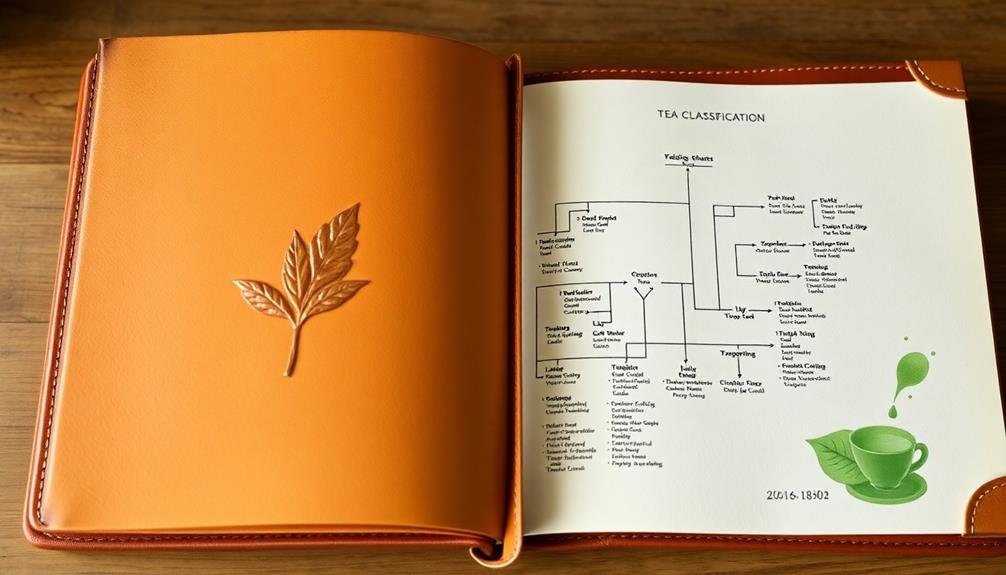
Incorporating an extensive tea classification system into your journal enhances its organization and educational value. Begin by categorizing teas into their main types: white, green, oolong, black, pu-erh, and herbal.
Within each category, create subcategories based on origin, processing method, or flavor profile. For example, under green teas, you might include subcategories like Japanese sencha, Chinese dragonwell, or Moroccan gunpowder.
Add a color-coding system or symbols to quickly identify each tea type visually. This will help you locate specific entries and compare similar teas more easily.
Include a section in your journal that explains the classification system you've chosen. List the characteristics of each tea type, such as typical flavor notes, caffeine content, and brewing methods. This reference guide will prove invaluable as you expand your tea knowledge.
Don't forget to leave room for flexibility in your classification system. As you discover new and unique teas, you may need to add or adjust categories.
Add Space for Brewing Notes
Your tea tasting journal's value skyrockets when you include dedicated space for brewing notes. These details are essential for replicating your favorite brews and understanding how different factors affect the tea's flavor. Create a section where you can record water temperature, steeping time, tea-to-water ratio, and any special brewing methods used.
Include fields for noting the type of teaware employed, such as a gaiwan, teapot, or infuser. Don't forget to leave room for observations on how changes in these variables impact the tea's taste, aroma, and appearance. This information will help you fine-tune your brewing techniques over time.
Consider incorporating a quick-reference table for common brewing parameters:
| Tea Type | Water Temp (°C) | Steep Time | Leaf Amount |
|---|---|---|---|
| Green | 70-80 | 1-3 min | 1 tsp/cup |
| Black | 95-100 | 3-5 min | 1 tsp/cup |
| Oolong | 80-95 | 2-5 min | 1-2 tsp/cup |
| White | 70-80 | 1-3 min | 1.5 tsp/cup |
| Pu-erh | 95-100 | 2-5 min | 1 tsp/cup |
Incorporate Visual Elements and Ratings
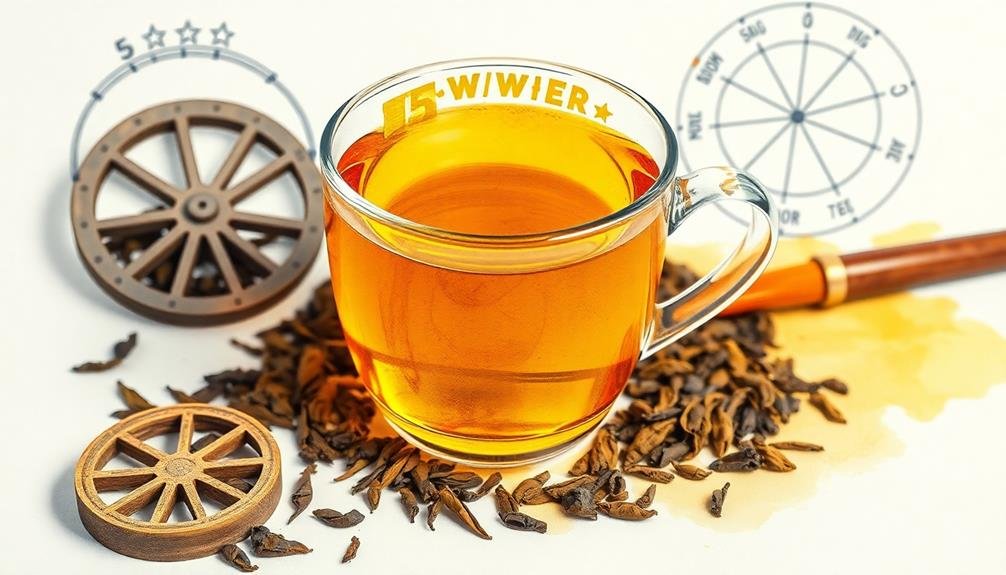
Visual elements and ratings can transform your tea tasting journal into a more engaging and informative resource. Consider adding a flavor wheel or aroma chart to help you visualize and describe the tea's characteristics more accurately. You can create your own or use existing templates, adapting them to your preferences.
Include a rating system for different aspects of the tea, such as aroma, flavor, body, and aftertaste. Use a consistent scale, like 1-5 stars or a 10-point system, to make comparisons easier across different teas. You might also want to add an overall rating to summarize your impression.
Don't forget to leave space for sketches or photographs. Drawing the tea leaves or the brewed liquid can help you remember visual details and improve your observational skills. If you're not confident in your artistic abilities, consider pasting in small photos instead.
Color-coding can be another useful visual element. Assign different colors to tea types or regions, making it easier to navigate your journal and spot patterns in your tasting experiences. You can use colored tabs, highlighters, or even different colored pages for each category.
Frequently Asked Questions
How Long Should I Keep My Tea Tasting Journal?
You should keep your tea tasting journal for as long as you're passionate about tea. There's no set timeframe; it's a personal choice. You'll find it valuable to track your experiences and preferences over months or even years.
Can I Use Digital Apps Instead of a Physical Journal?
You can use digital apps for your tea tasting journal. They're convenient, easily searchable, and often provide features like photo uploads and cloud syncing. However, you'll miss out on the tactile experience of a physical journal.
Should I Include Information About Tea Shop Visits in My Journal?
You'll want to include tea shop visits in your journal. Note the shop's atmosphere, customer service, and tea selection. Don't forget to jot down any unique experiences or memorable teas you've tried during your visit.
How Often Should I Update My Tea Tasting Journal?
You should update your tea tasting journal as often as you drink new teas. It's best to jot down your impressions immediately after tasting. If you're an avid tea drinker, aim for weekly or bi-weekly updates.
Is It Necessary to Include Health Benefits of Teas in the Journal?
You don't need to include health benefits in your tea journal, but you can if you're interested. It's your personal record, so focus on what matters most to you: flavor, aroma, and your overall experience.
In Summary
You've now got the tools to create a tea tasting journal that'll elevate your experience. Remember, it's your personal record, so don't hesitate to customize it. As you fill the pages, you'll develop a deeper appreciation for tea's nuances. Your journal will become a treasured companion, helping you discover new favorites and refine your palate. So grab your favorite brew, open your journal, and start your tea adventure today!


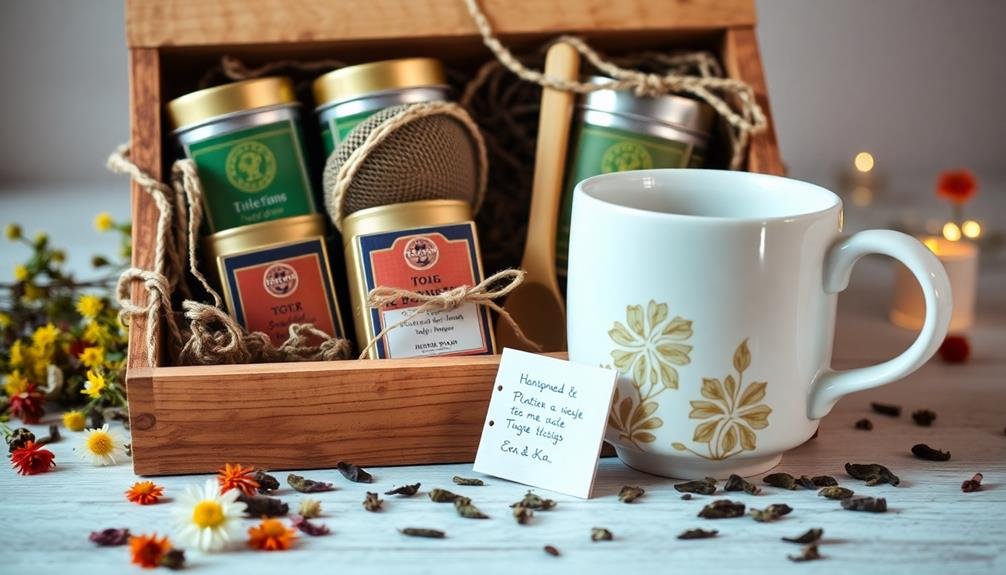
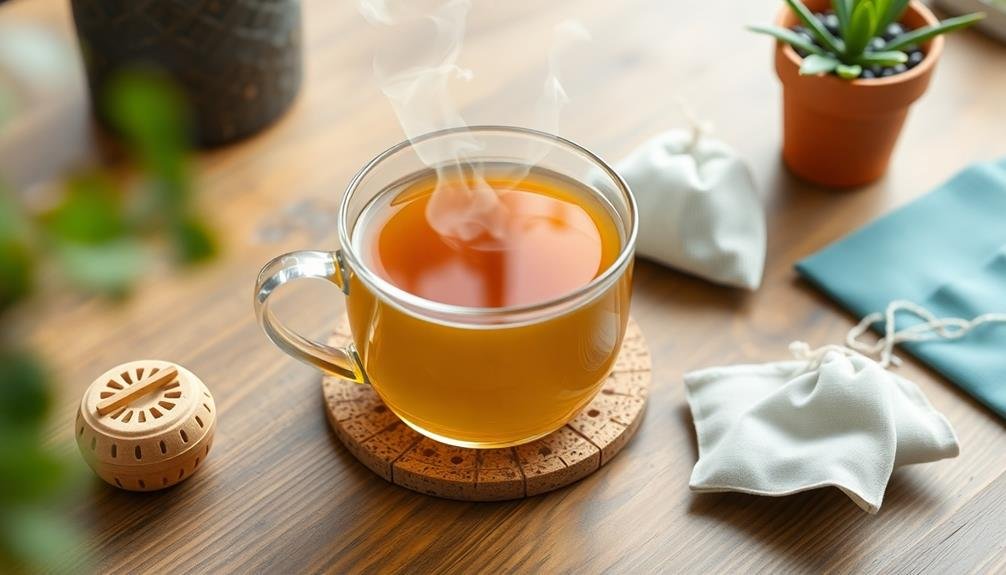
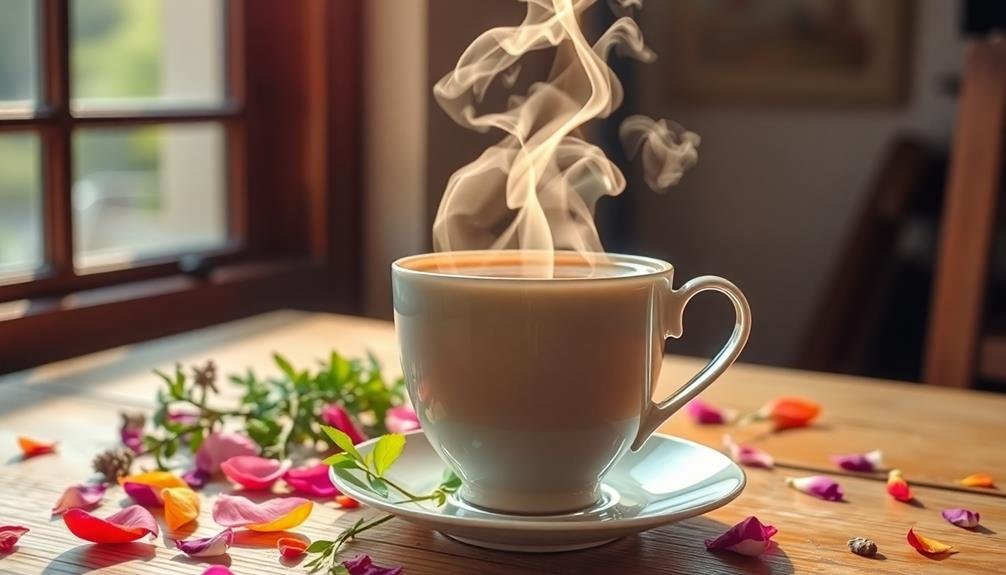
Leave a Reply